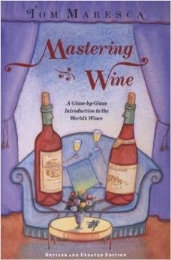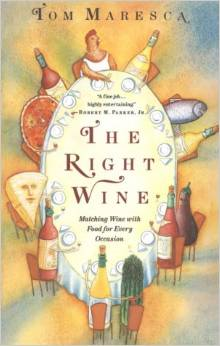In my last post, I wrote about the light, wine-themed lunches Diane and I enjoyed at Bordeaux’s Bar à Vin during our recent trip to France. This time, I’d like to talk about our dinners of classic Bordeaux dishes at the Brasserie Bordelaise.
These were emphatically not light – traditional Bordeaux cooking is rich – but they were delicious, and we left every evening happily stuffed and well protected against any evening chill. (None materialized: the weather in Bordeaux was unusually, almost unnaturally, warm.) Diane’s post about these meals will tell you all about the pleasures of lamprey à la bordelaise and wine-braised beef cheeks. I’ll confine myself to the wines.
We began with a contretemps. We had asked for a bottle of Lafon-Rochet, an estimable Saint-Estèphe, which our very fine – and as it turned out very knowledgeable – waiter, Frank, opened and of which he poured a small amount for us to smell and taste. Diane thought she detected a whiff of corking: her sense of this is very acute. Frank swirled and sniffed and made a face, and swirled and sniffed again before announcing that it was slight but the bottle was definitely corked. He opened another, and we all sniffed together – and to his extreme dismay, this bottle was worse, even more emphatically corked.
.
.
Frank was aghast: This had never happened to him before. We actually spent a few minutes calming him, assuring him that we understood that such things happened, that we didn’t hold it against the house, and so forth, before we decided not to try a third Saint-Estèphe but instead to go with a bottle of a Pessac-Léognan, Domaine de la Solitude. That wine was absolutely lovely, a classic cedar-accented red Graves, and it partnered beautifully with the whole spectrum of rich flavors our lamprey presented.
.
.
The house made totally superfluous amends for the initial wine problem by presenting us, at the end of meal, with small snifters of a 25- and a 20- year-old Armagnac – both marvelous, and a totally appreciated generous gesture.
Our second night at Brasserie Bordelaise, our last in Bordeaux, went off without hitch. Diane feasted on her beloved roast chicken and I on an ambrosial braised beef cheek. To accompany these dishes, we again tried our luck with Saint-Estèphe, this time an old favorite of ours, Château de Pez.
.
.
This wine was, to everyone’s relief, totally sound and made a perfect partner to our meal, characteristically blending some of the elegance of Saint-Julien (the neighboring commune to its south) with the intriguing little touch of rusticity that is the hallmark of Saint-Estèphe. Chicken and beef couldn’t have asked for a better partner.
I would say that elegance with a little touch of rusticity describes not just the wines of Saint-Estèphe but also the meals we enjoyed in Bordeaux. We dined and drank as well there as we have in all but the most exalted Parisian restaurants, and for me at least the availability of fine cellars of excellent Bordeaux wines was a special treat.
Nostalgia played a great part in my enjoyment, no doubt: It’s been decades since I was last in Bordeaux, but I learned wine – centuries ago now – mostly on bottles of Bordeaux. Even though my palate has gone in many different directions since then, in our few days in Bordeaux, it re-encountered its old teachers with great pleasure. Maybe sometimes you can go home again.































